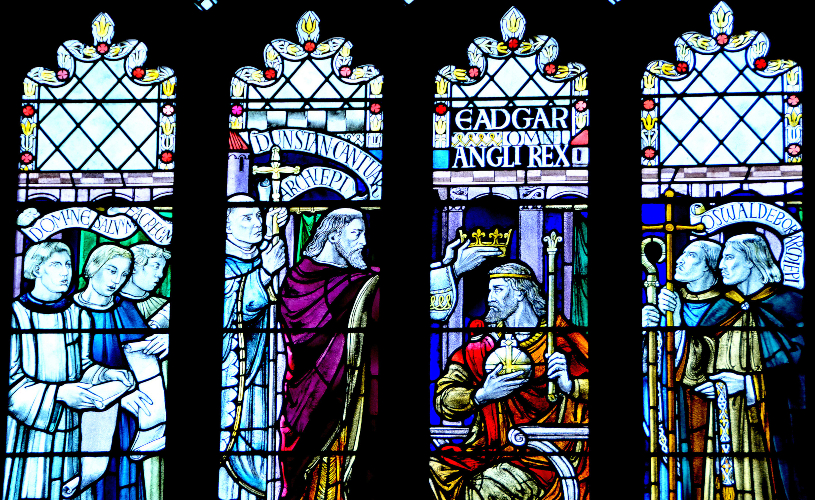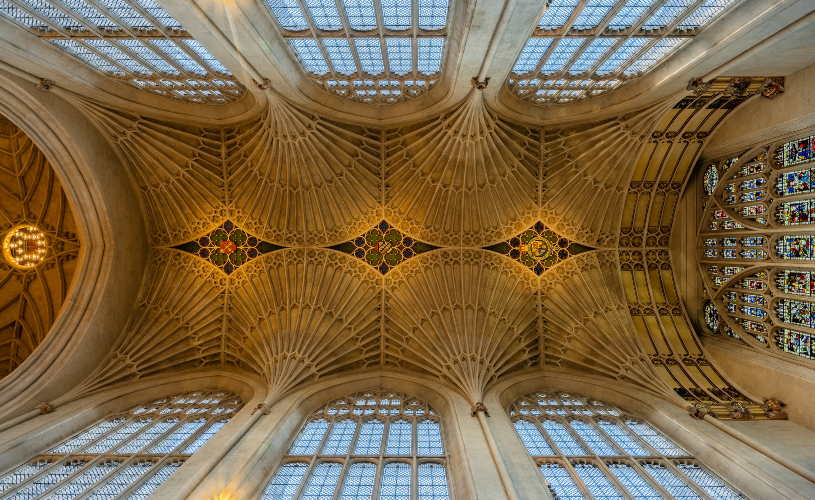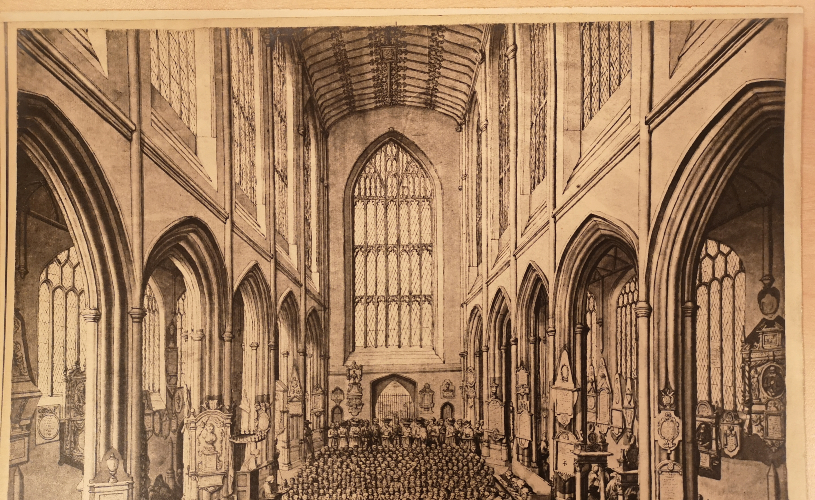There's so much to love about Bath Abbey, and as Dr. Oliver Taylor, Head of Interpretation at the Abbey explains, the Grade I Listed church in the heart of Bath is one of many jewels in the city’s crown, with several facets worth exploring.
The finest Tudor ceiling in England and France, 52 windows, the largest collection of church monuments in the country, a unique floor and heating system, a vision of heaven and earth on its façade, and stonework designed by royal master masons. And that’s just some of the architecture!
The Abbey’s Footprint Project has recently made the church building more accessible and environmentally friendly, thanks to public money from the National Lottery Heritage Fund. The heating system, which harnesses the heat in the 40 degree water that flows out of the Roman Baths, has been used to heat the church itself and the new underground facilities created through the project, which include new choir rehearsal spaces, new learning spaces for schools, and a new permanent exhibition.
Unlike places such as York Minster, the Abbey has never had its own team of masons or mason’s yard to maintain the building, so has carried out major projects like Footprint throughout its history. In the Anglo-Saxon times, stone would have been used from the old Roman Baths to build the first church on the site, which was described as a remarkable construction near the thermal springs. So much so that it was the site of the coronation of Edgar as “First King of All England” on 11 May 973, an event which became the template for all subsequent coronations, including that of our current King, Charles III.

Image: Edgar's Coronation as 'First King of all England' captured in one of the Abbey's stained glass windows, credit Bath Abbey.
In 1090, the new French Bishop of Bath, John of Tours, began the building of an enormous cathedral and monastery on the site where the present Abbey now stands. These buildings looked very different to how the Abbey does now and their story, and that of the monks who worshipped and worked in them, is brought alive in the Abbey’s new Discovery Centre, which beautifully presents a selection of its stonework and medieval floor tiles, with accompanying line-drawings by the exhibition’s illustrator Ailsa Burrows.
Approximately 30 metres longer than the present church, the medieval cathedral occupied the site until the late 1400s, but had by then become ruinous. Oliver King, the Bishop of Bath and Wells from 1495-1503, helped to rebuild the Abbey, and is said to have dreamed a dream similar to Jacob’s Ladder in the Bible. The unique design of ladders and angels appear on the Abbey’s West Front, a symbol of the Christian journey from earth to heaven. Oliver King also employed King Henry VII’s royal masons, Robert and William Vertue, to design the famous fan-vaulted ceiling to the east of the tower, a ceiling the Vertues considered the finest in England and France.

Image: The Tudor fan vaulted ceiling at Bath Abbey
At the time of King Henry VIII’s dissolution of monasteries, Bath’s was the second-richest in Somerset behind Glastonbury. In 1539, Bath’s monks were pensioned off, their monastery closed, and the valuables of the church sold off. The church building became little more than a convenient stone quarry for the city’s construction needs. This meant that Bath also had no large church that would accommodate the increasing numbers of the “nobilitie” who began to visit the city for their health, and wanted to attend services. As a result, when large numbers of people gathered, sermons had to be held in the marketplace.
In 1573, Queen Elizabeth I licensed a seven-year nationwide collection to support the rebuilding of the Abbey. Over the following 50 years, the Abbey was transformed from a ruin to a church which the city could be proud of. Once the church had been rebuilt, it could serve the city effectively and its growing numbers of well-to-do but sickly visitors. This meant that the number of monuments grew in the Abbey to become the largest collection of any church in the country: 891 stones on the floor and 635 around the walls.

Image: Samuel Grimm's service of worship in the Abbey in 1788, credit Bath Abbey
Before Sir George Gilbert Scott’s renovation of the Abbey in the late 19th century, the monuments’ arrangement was very different, and the church was effectively a gallery for the latest sculptures, some by celebrated artists such as Flaxman, Chantrey, Nollekens, and Bacon. Those interested in the full story of the Abbey’s monuments can look out for Oliver's exciting new publication called Bath Abbey’s Monuments: An Illustrated History by The History Press, due to be published this August.
450 years since the beginning of the collection which helped to make the Abbey the city’s Parish Church, the “Lantern of England,” as the Abbey is sometimes known, continues to be a beacon in the city: Living and Telling the Good News of Jesus with the city and its visitors, and a place to explore life in its fullest. Whether you come for its music, art, architecture, worship, quiet space, or community, the Abbey offers a welcoming and enriching experience to all who visit. If you haven’t been to the Abbey before or haven’t been for a while, make some time to visit soon.
Read more:
Related
Comments
Comments are disabled for this post.





